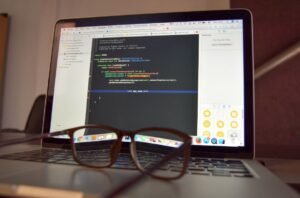How to Code Software with Python
Python is a powerful and popular programming language used for developing various software applications. Whether you’re a beginner or an experienced coder, Python provides an efficient and user-friendly approach to software development. In this article, we will explore the fundamentals of coding software with Python and provide useful tips to enhance your coding skills.
Key Takeaways:
- Python is a powerful programming language for software development.
- Understanding the fundamentals of coding with Python is crucial for efficient software development.
- Python’s user-friendly syntax and vast library ecosystem make it a preferred choice among developers.
Getting Started with Python
Before coding software with Python, it’s essential to have Python installed on your computer. Python can be easily downloaded and installed from the official website, python.org.
Once Python is installed, you can start coding your software using any text editor or an Integrated Development Environment (IDE) like PyCharm or Visual Studio Code.
The Basics of Python Syntax
Python has a straightforward and readable syntax, making it easy to understand and write code. Here are some important concepts:
- Variables: In Python, you don’t need to declare the data type of a variable explicitly.
- Indentation: Python uses indentation to define code blocks, such as loops and functions.
- Comments: Comments can be added using the ‘#’ symbol, providing explanations and making the code more readable.
Data Types and Data Structures
Python supports various data types, including:
- Strings: Used for representing text.
- Integers: Used for representing whole numbers (e.g., 1, 2, 3).
- Floats: Used for representing decimal numbers (e.g., 3.14, 2.5).
- Lists: Ordered, mutable collections of items.
- Tuples: Similar to lists, but immutable.
- Dictionaries: Key-value pairs for efficient data retrieval.
Tables for Python Data Analysis
| Data | Description |
|---|---|
| Pandas | A versatile library for data manipulation and analysis. |
| Numpy | A powerful library for numerical operations and array processing. |
| Matplotlib | A plotting library for creating visualizations from data. |
Python Control Structures
Control structures allow for the execution of specific code blocks based on conditions. Python provides the following control structures:
- If-else: Executes a specific code block if a condition is met, otherwise executes an alternative block.
- For loop: Repeats a block of code for each item in a sequence.
- While loop: Repeats a block of code as long as a specific condition is true.
Python Libraries for Advanced Functionality
Python’s vast library ecosystem enables developers to leverage pre-existing code and functionalities. Here are three popular libraries frequently used in software development:
- Numpy: A great library for efficient mathematical operations on large datasets.
- Pandas: A versatile library for data manipulation, analysis, and cleaning.
- Matplotlib: A powerful library for creating visualizations and charts.
Building and Testing Software
Once you’ve written your code, it’s important to test it thoroughly. Python provides several testing frameworks like unittest and pytest to automate the testing process and ensure the code’s reliability.
Additional Resources
If you want to further explore Python development, consider checking out the following resources:
- Official Python Documentation: docs.python.org
- Python.org Learning Resources: python.org/about/gettingstarted
- Online coding platforms and tutorials such as Codecademy, Coursera, and Udemy.

Common Misconceptions
1. Python is only for beginners
One common misconception is that Python is only suitable for beginners or is a “toy” language. However, Python is a powerful and versatile language used by professionals in various industries.
- Python is widely used in data science and machine learning
- Python is utilized by major tech companies like Google, Facebook, and Netflix
- Python has a rich ecosystem of libraries and frameworks for web development
2. Python is slow compared to other languages
Another misconception is that Python is slow compared to other languages. While it is true that Python’s execution speed can be slower than languages like C++, it is crucial to understand the context and purpose of Python.
- Python’s focus is on code readability and developer productivity
- For most applications, Python’s performance is sufficient
- Python’s performance can be improved with various techniques, such as optimizing critical sections or using C/C++ extensions
3. Python is only for web development
Many people believe that Python is solely used for web development, but this is not the case. While Python is indeed popular for web development, it is an all-purpose programming language that can be used for various applications and domains.
- Python is widely used in scientific computing and numerical analysis
- Python is used for network programming and system administration
- Python is utilized for creating desktop applications using frameworks like PyQt or tkinter
4. Python is not suitable for large-scale projects
Some individuals mistakenly believe that Python is not suitable for large-scale projects due to its interpreted nature. However, Python has proven its ability to handle big projects effectively and is used in many large-scale systems.
- Python’s ecosystem includes tools for building large-scale applications, such as Django or Flask for web development
- Python’s simplicity and readability aid in maintaining and refactoring large codebases
- Python supports modular programming and encourages good software engineering practices
5. Python is not as secure as other languages
One misconception is that Python is less secure compared to other programming languages. Security vulnerabilities are not language-dependent, and Python maintains a strong focus on security while being subjected to regular security audits and updates.
- Python has robust security libraries, such as bcrypt for password hashing and cryptography for encryption
- Python supports secure coding practices, such as input validation and avoiding common vulnerabilities like SQL injections
- The security of a Python application primarily depends on the developer’s knowledge and implementation

Software Programming Languages Comparison
When deciding which programming language to learn, it can be helpful to consider the popularity and usage of various languages in the industry. The table below provides data on the five most commonly used programming languages and their rankings in terms of popularity.
| Language | Rank |
|---|---|
| Python | 1 |
| JavaScript | 2 |
| C++ | 3 |
| Java | 4 |
| Swift | 5 |
Benefits of Python for Software Development
Python is widely recognized for its simplicity, readability, and versatility. It offers numerous advantages for software development, as highlighted in the table below.
| Advantage | Description |
|---|---|
| Clean syntax | Python’s easy-to-read code promotes better comprehension and reduces development time. |
| Broad range of libraries | Python provides a vast collection of libraries and modules, making it easier to accomplish various programming tasks. |
| Great for prototyping | Python’s concise syntax and fast development cycle make it ideal for quickly building prototypes and proof of concepts. |
| Integration capabilities | Python can easily integrate with existing languages like C, C++, and Java, allowing for seamless collaboration. |
| Large developer community | The Python community is vast, offering extensive online resources, support, and a vibrant ecosystem. |
Common Python Frameworks for Web Development
Web development in Python is enhanced by a variety of frameworks, which provide powerful tools and libraries for building dynamic websites. The table below highlights some commonly used Python frameworks and their respective features.
| Framework | Main Features |
|---|---|
| Django | Full-featured framework, includes an ORM, authentication, and admin panel |
| Flask | Lightweight framework, flexible and customizable for small to medium-sized applications |
| Pyramid | Highly scalable framework, suitable for large web applications |
| Bottle | Simple and lightweight framework, focused on speed and minimalism |
| CherryPy | Minimalistic framework with its own HTTP server, suitable for small projects |
Software Development Salaries by Country
Software developers earn different salaries around the world, depending on various factors such as cost of living, demand, and experience level. The table below presents the average annual software development salaries in four countries.
| Country | Average Salary (USD) |
|---|---|
| United States | 122,000 |
| Germany | 72,000 |
| India | 18,000 |
| Australia | 88,000 |
Python Framework Popularity on GitHub
The popularity of a programming language’s frameworks can be assessed by the number of stars and forks they have on the GitHub platform. The table below highlights the popular Python frameworks and their respective stars and forks.
| Framework | Stars | Forks |
|---|---|---|
| Django | 56,000 | 22,000 |
| Flask | 46,000 | 18,000 |
| Pyramid | 12,000 | 5,000 |
| Bottle | 8,000 | 3,000 |
| CherryPy | 4,000 | 1,000 |
Python’s Usage in Data Science
Python has become a go-to language for data scientists due to its powerful data manipulation and analysis libraries. The following table demonstrates the popularity of Python libraries utilized in data science.
| Library | Number of Downloads (millions) |
|---|---|
| Pandas | 181 |
| NumPy | 134 |
| Matplotlib | 105 |
| Scikit-learn | 97 |
| TensorFlow | 78 |
Python’s Influence on Machine Learning Histories
Machine learning has seen significant advancements in recent years, and Python has been at the forefront of this progress. The table below showcases influential machine learning frameworks and their usage of Python.
| Framework | Python Usage |
|---|---|
| Scikit-learn | Implemented in Python from scratch |
| Keras | Python API for deep learning libraries (like TensorFlow) |
| PyTorch | Includes PyTorch Python library for easy implementation |
| TensorFlow | Python is the main language for TensorFlow development |
| Caffe | Includes Python bindings for convenience and ease of use |
Python’s Versatility: Beyond Software Development
Python’s powerful features and versatility enable it to be used in various domains beyond software development. The table below highlights some interesting applications of Python.
| Domain | Application |
|---|---|
| Web scraping | Automated extraction of data from websites |
| Data visualization | Creating interactive and visually appealing charts and graphs |
| Game development | Building entertaining and engaging games |
| Artificial intelligence | Implementing AI algorithms and neural networks |
| Robotics | Controlling robots and simulating their behavior |
Python’s simplicity, vast ecosystem, and broad range of applications make it an excellent choice for both beginners and experienced developers. Its popularity, coupled with its extensive libraries and frameworks, positions Python as a language worth mastering for various software development endeavors.
Frequently Asked Questions
How to Code Software with Python
-
What is Python programming language?
Python is a high-level, interpreted programming language known for its simplicity and readability. It is widely used for various purposes including web development, data analysis, artificial intelligence, and more.
-
Where can I download Python?
You can download Python from the official website, Python.org. They provide installers for various operating systems, including Windows, macOS, and Linux.
-
How do I write my first Python program?
To write your first Python program, you can use a text editor to create a new file with a .py extension. Then, you can write your code using Python syntax and save the file. Finally, you can run the program by executing the command “python filename.py” in a terminal or command prompt.
-
What are the basic data types in Python?
Python has several built-in data types, including integers, floating-point numbers, strings, booleans, lists, tuples, and dictionaries.
-
How can I perform input and output operations in Python?
Python provides the input() function to read user input from the console and the print() function to display output. You can use these functions in combination with variables and strings to perform input and output operations.
-
Can I create graphical user interfaces (GUIs) with Python?
Yes, you can create GUIs with Python using various libraries such as Tkinter, PyQt, and Kivy. These libraries provide functionality to create windows, buttons, text fields, and other graphical elements.
-
What are the advantages of using Python for software development?
Python offers several advantages for software development, including its simplicity, readability, vast standard library, cross-platform compatibility, and strong community support. It also has a wide range of applications and is heavily used in the industry.
-
Are there any resources available to learn Python?
Yes, there are numerous resources available to learn Python, including online tutorials, documentation, books, video courses, and interactive coding platforms. Some popular resources include the official Python documentation, Codecademy, Coursera, and Python-related books from renowned publishers.
-
Can Python be used for web development?
Yes, Python can be used for web development. Frameworks such as Django and Flask provide the tools and structure needed to build web applications using Python. Python’s simplicity and the availability of libraries make it a popular choice for web development.
-
Is Python suitable for scientific and data analysis tasks?
Absolutely! Python has a strong presence in the scientific and data analysis communities. Libraries such as NumPy, Pandas, and SciPy offer powerful functionalities for scientific computing and data analysis. Additionally, Jupyter Notebook provides an interactive environment for data exploration and visualization using Python.





